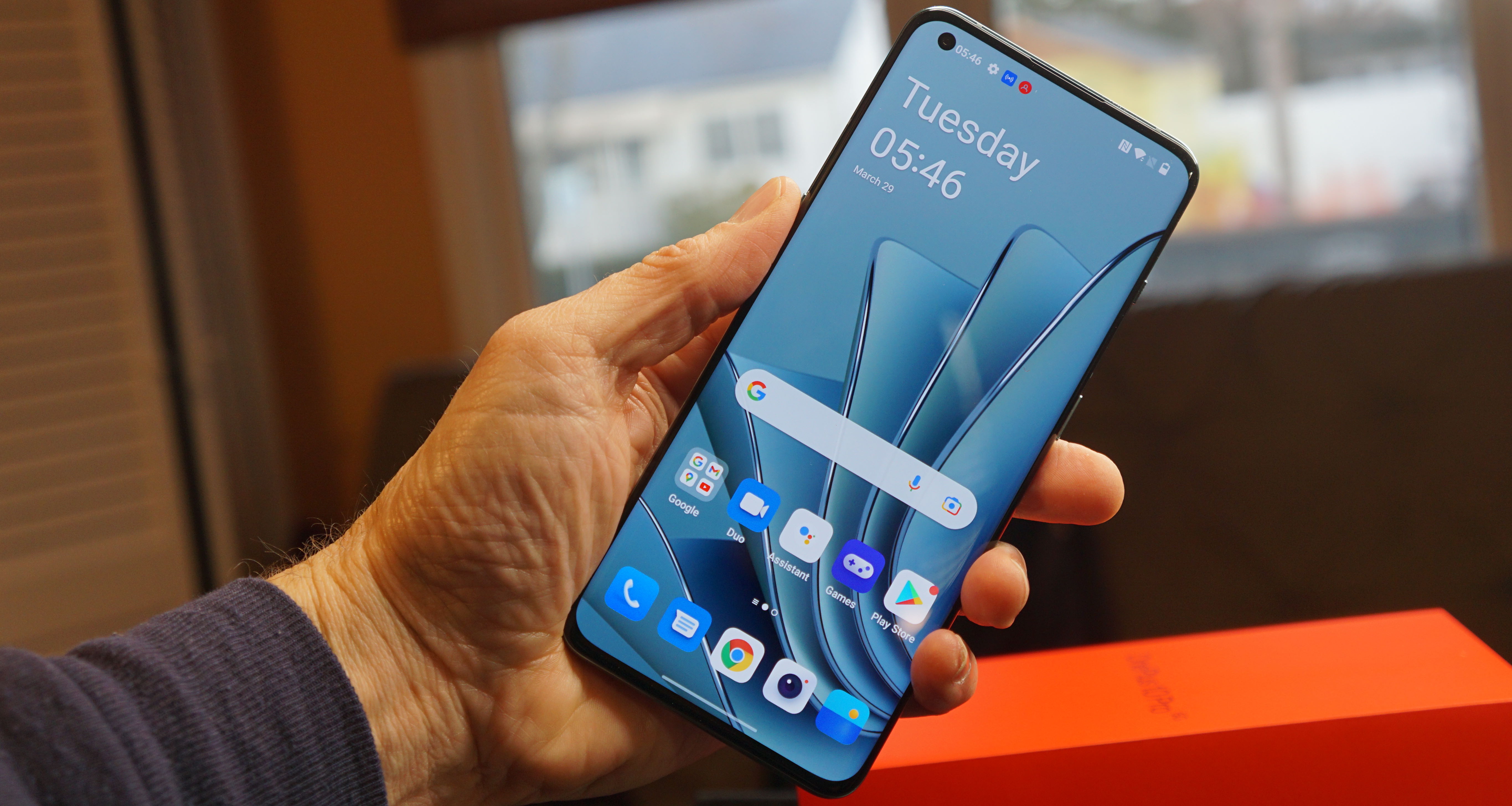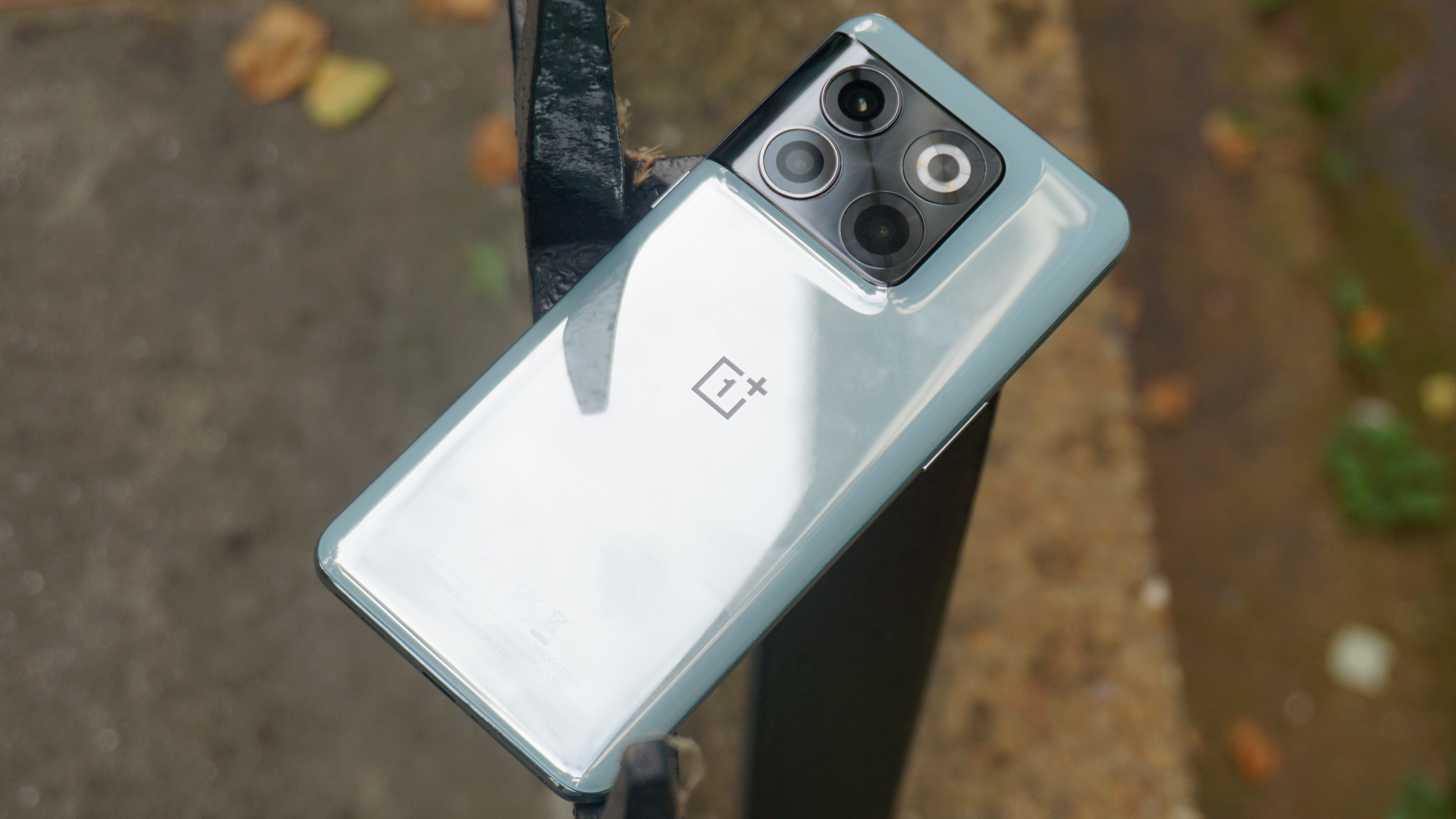OnePlus 10T vs OnePlus 10 Pro

The OnePlus 10T is a phone we’ve been somewhat familiar with for a while, because in typical OnePlus fashion the company extensively teased it pre-launch, revealing many of the specs and features in the process.
But now the phone has fully launched, so we know everything about it. And it’s a bit of an oddity, as it has a high launch price not dissimilar to its sibling, the OnePlus 10 Pro, and while its specs are better in some ways, they’re worse in others.
So choosing between these two phones could be tricky, but to help make your decision easier, we’ve compared all of their key specs and features.
OnePlus 10T vs OnePlus 10 Pro price and availability
The OnePlus 10T goes on sale on August 6 in India, August 25 in Europe and September 29 in the US, with pre-orders opening on August 3 in India and Europe and September 1 in the US. It starts at £629 / €649 / $699 / INR49,999, which gets you 128GB of storage and 8GB of RAM, while a version with 16GB of RAM and 256GB of storage will cost you £729 / €749 / $799 / INR55,999. There's also a 12GB RAM model with 256GB of storage, exclusive to India, priced at INR54,999.
The OnePlus 10 Pro is available now and comes with a starting price of $799 / £799 for 128GB/8GB. The price for the top model is $869 / £899, but here you only get 12GB of RAM along with 256GB of storage – while the top-spec 10T boasts 16GB RAM. Those price sin the US are lower than they were, as when the 10T launched, OnePlus US discounted the Pro.
For either phone, it's a good idea to see what OnePlus promo codes are currently available to help you save further.

OnePlus 10T vs OnePlus 10 Pro design
The OnePlus 10T and OnePlus 10 Pro look very similar. Both have a large square camera block curving out from the frame, both have a slightly curved Gorilla Glass 5 back, and both have a OnePlus logo adorning the center of the rear.
Sign up for breaking news, reviews, opinion, top tech deals, and more.
They also have very similar dimensions, with the OnePlus 10T coming in at 163 x 75.37 x 8.75mm, while the OnePlus 10 Pro is 163 x 73.9 x 8.6mm. There’s not much difference in what they weigh either, as the 10T is 203.5g, and the 10 Pro is 201g.
There are some notable differences though. For one thing, while the OnePlus 10T comes in a choice of Moonstone Black and Jade Green shades, with the OnePlus 10 Pro you get a choice of Volcanic Black or Emerald Forest.
In both cases this comes down to black or green, but the exact shades and material finishes differ – especially those green colorways, where the 10T's Jade Green dons a reflective finish that's prone to fingerprints, while the 10 Pro's anti-glare glass Emerald Forest deftly repels them.

Another difference is that while the OnePlus 10 Pro has an alert slider (which lets you switch between silent, vibrate and ring modes), the OnePlus 10T doesn’t, with the software-only alternative proving a little clunky, even compared to other Android phones.
The biggest differences though are found on the front, as the OnePlus 10T’s front-facing camera is in the top center of the display, while the OnePlus 10 Pro places this in the top left corner of the screen. Speaking of the screen, that has some notable differences too, as we’ll get to just below.
OnePlus 10T vs OnePlus 10 Pro display
The biggest difference between the screens on these two phones is that while the OnePlus 10T has a flat display, the OnePlus 10 Pro has a curved one.
The OnePlus 10T’s screen also isn’t as high resolution as the OnePlus 10 Pro’s – though it’s the same size – coming in at 6.7-inches and 1080 x 2412, while the OnePlus 10 Pro has a 6.7-inch 1440 x 2560 display.
That means you get around 525 pixels per inch on the OnePlus 10 Pro but only around 394 pixels per inch on the OnePlus 10T – though in general use that will make little difference to most people.

The other display specs on the OnePlus 10T are broadly comparable though – both phones have a 120Hz variable refresh rate, both support HDR10+, both have an in-screen fingerprint scanner, and both use AMOLED.
They also both use Gorilla Glass on the screen for protection, but while the OnePlus 10 Pro uses the latest and greatest Gorilla Glass Victus, the 10T is stuck with the slightly older – Gorilla Glass 5.

OnePlus 10T vs OnePlus 10 Pro cameras
Both phones have a triple-lens camera on the back, but the specific sensors differ significantly. On the OnePlus 10T you get a 50MP f/1.8 primary sensor, an 8MP f/2.2 ultra-wide one, and a 2MP macro one.
It’s the sort of setup we’d expect to see on a mid-range handset, especially as even that 50MP snapper uses a Sony IMX766 sensor, which is more often found on mid-range phones.
The OnePlus 10 Pro on the other hand has a Sony IMX789 48MP f/1.8 primary camera (exclusive to OnePlus and its sister companies), a 50MP f/2.2 telephoto one, and an 8MP f/2.4 telephoto one, with 3.3x optical zoom.

So the OnePlus 10 Pro has a big advantage when it comes to zooming, but on paper its other cameras should be better than the OnePlus 10T’s as well.
As for the front-facing cameras, there’s a 32MP one on the OnePlus 10 Pro and a 16MP one on the OnePlus 10T, so again the 10 Pro likely has the edge – though megapixels aren’t everything.
OnePlus 10T vs OnePlus 10 Pro specs and performance
In most areas so far, the OnePlus 10 Pro has come out on top on paper, but here it’s the OnePlus 10T that has the edge, as it has a Snapdragon 8 Plus Gen 1 chipset, while the OnePlus 10 Pro has a slightly older – and lesser – Snapdragon 8 Gen 1 SoC.
The OnePlus 10T can also come with more RAM, as you get a choice of 8GB, 12GB or 16GB, while with the 10 Pro it’s either 8GB or 12GB – at least in most regions.
These differences are unlikely to make much difference in practice, with both handsets having top specs here, but if you want the definitively more powerful handset, then the OnePlus 10T will be the phone to go for.
The two phones run the same software though – both use OxygenOS 12.1 (based on Android 12), and both will be updated to OxygenOS 13 once Android 13 arrives – though the OnePlus 10 Pro is scheduled to get that update first. Both phones also support 5G.

OnePlus 10T vs OnePlus 10 Pro battery life
The OnePlus 10T has a 4,800mAh battery, which is a reasonable capacity but nothing special. However, in our hands-on review we found its endurance was poor, with the battery just barely lasting through a day of use.
The good news is that it supports 150W charging, which according to OnePlus can fully charge it in just 19 minutes. At least, in the UK and most parts of the world it supports that, but due to the socket voltages used in the US the charging power tops out at 125W there.
That still has the OnePlus 10 Pro beat though, as that phone tops out at 80W in most of the world and 65W in the US. However, the OnePlus 10 Pro has a slightly larger 5,000mAh battery, so it will potentially last longer between charges.

Takeaway
Looking purely at the specs, the choice between the OnePlus 10T and the OnePlus 10 Pro seems to come down to how much you value power and speed, especially as the two phones occupy a similar pricing space.
For the maximum possible performance and charging speeds, the OnePlus 10T is the phone to go for. But the OnePlus 10 Pro is likely to offer a more rounded experience – it has a good top-tier chipset, plenty of RAM and fairly fast charging, even if those particular attributes don't quite compete with the 10T. It also looks to have a better screen and cameras.
We can’t pass a definitive verdict until we’ve put the OnePlus 10T through a full review, but on paper it could be a tough sell. Most people are likely to be better off with the OnePlus 10 Pro, and those who really want the sheer power of the 10T might arguably be better off ignoring OnePlus altogether and buying one of the best gaming phones out there, instead,
James is a freelance phones, tablets and wearables writer and sub-editor at TechRadar. He has a love for everything ‘smart’, from watches to lights, and can often be found arguing with AI assistants or drowning in the latest apps. James also contributes to 3G.co.uk, 4G.co.uk and 5G.co.uk and has written for T3, Digital Camera World, Clarity Media and others, with work on the web, in print and on TV.